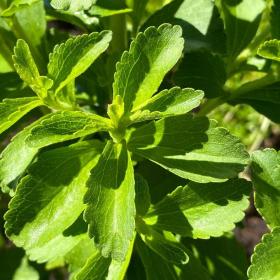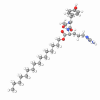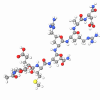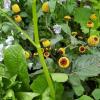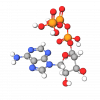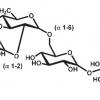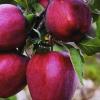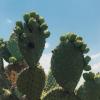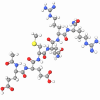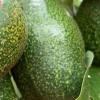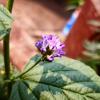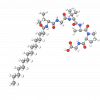The Guarani Indians who populated this region were the first to use this herb, which they call "ka'a he'ê" (sweet herb), like sugar to sweeten the bitterness of tea and a medicinal plant. The plant was introduced to populations outside of Latin America in 1888 by Dr. Bertoni, who gave his name to the plant. Today, Stevia is cultivated in over 20 countries, including Brazil, China, Japan, Korea, and Thailand.
Better known simply as Stevia, Stevia Rebaudiana is a wild herb that originates from the sub-tropical forest located on the border of Paraguay and Brazil.
Stevia is a herb, part of the Asteraceae family, more than 300 times sweeter than sugar, and adds natural sweetness to lip balms, teas, and foods. It grows naturally in prairies or on high plateaus, in semi-arid climates, to approximately 10-15 inches in height.
No calories and is an excellent digestive remedy. It is a small green plant containing 10% steviol glycosides (sweet compounds) in its leaves, giving Stevia leaves their sweet flavor. Stevia Rebaudiana Extract helps to improve skin tone & reduce blemishes. It is used in hydrating and wrinkle-smoothing applications.Stevia Rebaudiana Extract is also used in mouth/toothpaste preparations to reduce the bacteria that create plaque & tooth decay.
Ingredients
What makes Stevia so sweet?
Stevia leaves are made up of four main steviol glycosides:
- Stevioside represents 5 to 10% of the dry matter (250 – 300 times sweeter than sugar). This substance has a bitter, mentholated taste.
- Rebaudioside A, which represents 2 to 4% of the dry matter. This is the sweetest substance (200 to 400 times sweeter than sugar), with no bitter taste.
- Rebaudioside C, which represents 1 to 2% of the dry matter.
- Dulcoside A., which represents 0.5 to 1% of the dry matter.
